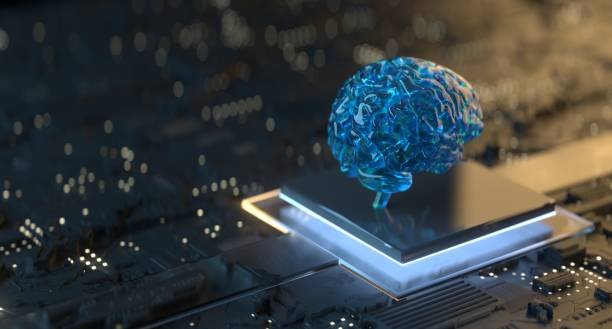Artificial intelligence (AI) has evolved into a transformative force, impacting many parts of our lives. Neural Networks and Deep Learning, the two basic elements of AI, have become critical in generating tremendous growth. Knowing these concepts explains the foundation of AI and their diverse yet interrelated roles in creating the world of technology.
The projected profit in the worldwide market for deep learning processors is likely to skyrocket, rising from 2.62 billion US dollars in 2019 to 20 billion US dollars by 2027. This significant growth highlights the growing importance and need for deep learning techniques in the tech sector, indicating a spectacular trajectory in the next years.
Neural Networks, influenced by the design of the human brain, serve as the cornerstone for current AI. The interlinked nodes, which resemble neurons, process data and discover patterns, bringing in an approach change in machine learning.
Deep Learning, a development inside neural networks, has also revolutionised the AI field. Its ability to analyse large amounts of information and draw complicated insights has fuelled advancements in various areas, including financial services and healthcare.
Distinguishing Between Neural Networks and Deep Learning: What Sets Them Apart?
A neural network is machine learning that models the neuronal networks in a person's brain.
To acquire, regulate, and transfer data across the neurons, each neuron in a person's brain connects with another neuron within the brain. Similarly, neural networks accept data at the input level, analyse it across preferably one layer that is hidden, and then send its outcome to the output layer.
On the other hand, deep learning comprises several hidden layers of neural networks that execute complex operations on massive amounts of structured and unstructured data. They alternatively uncover patterns in real-world data such as photographs, text, and audio, using data used as training to improve the accuracy of predictions.
The following is a comparison of Neural Networks and Deep Learning:
| Parameters | Deep Learning Systems | Simple Neural Networks |
| Architecture | Multiple hidden layers are arranged for recombination or repetition. | An inner, outer, and hidden layer comprise neural networks. They are structurally identical to the human brain. |
| Performance | A deep learning system can solve difficult issues with massive volumes of data. | When it comes to tackling straightforward problems, neural networks excel. |
| Complexity | A deep learning network can be intricate depending on its purpose, using structures such as long short-term memory (LSTM) and autonomous encoders. | Neutral networks are simpler because they contain fewer levels. |
| Training | Training a deep learning system is expensive in terms of funds and assets. | Because of its simplicity, a neural network is less expensive to develop. |
Deep Learning vs. Neural Networks in Practical Applications
Considering their inexpensive development costs and low operational requests, simple neural networks are frequently used for machine learning (ML) tasks. Organisations can create applications that employ basic neural networks inside. Since they have fewer computing requirements, they are more suitable for smaller projects. If a corporation needs to visualise data or recognise trends, neural networks are a low-cost solution to do these tasks.
Deep learning systems, on the other hand, offer an extensive selection of practical applications. Their capability to learn from information, extract trends, and create features enables them to provide cutting-edge performance. Deep learning models, for example, can be used in natural language processing (NLP), self-driving cars, and recognising speech.
However, considerable resources and finances are required to teach and self-develop a deep learning system. However, organisations choose to use previously trained deep learning platforms as an entirely managed solution that they can tailor to their own needs.
Conclusion
The contrast between Neural Networks and Deep Learning appears critical in traversing machine intelligence's path. These linked components form the foundation of current AI, guiding technological growth and altering industries.
Knowing the differences between Neural Networks and Deep Learning is becoming increasingly important as machine intelligence continues to rise. The fundamental architecture of AI, neural networks, lays the framework for understanding how machines learn and interpret information. Meanwhile, Deep Learning, a development inside neural networks, expands on this skill by allowing for studying large datasets and extracting complicated patterns.
The importance of these technologies reverberates across industries, prompting them to reinvent possibilities. As the demand for AI skills grows, taking AI For Business course and machine intelligence training becomes more important.
The Executive Programme In AI For Business, presented by Imarticus, is one such example among leading AI and ML courses geared for experts working in the area of Artificial Intelligence.







